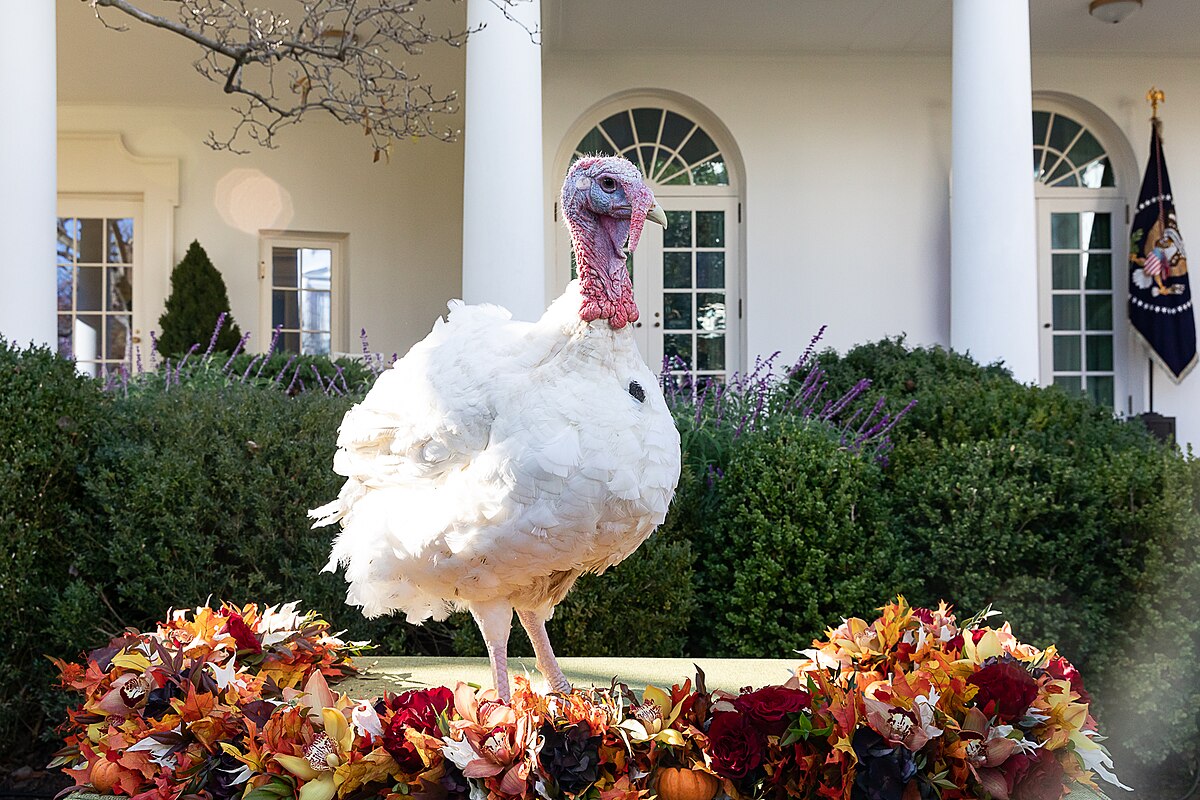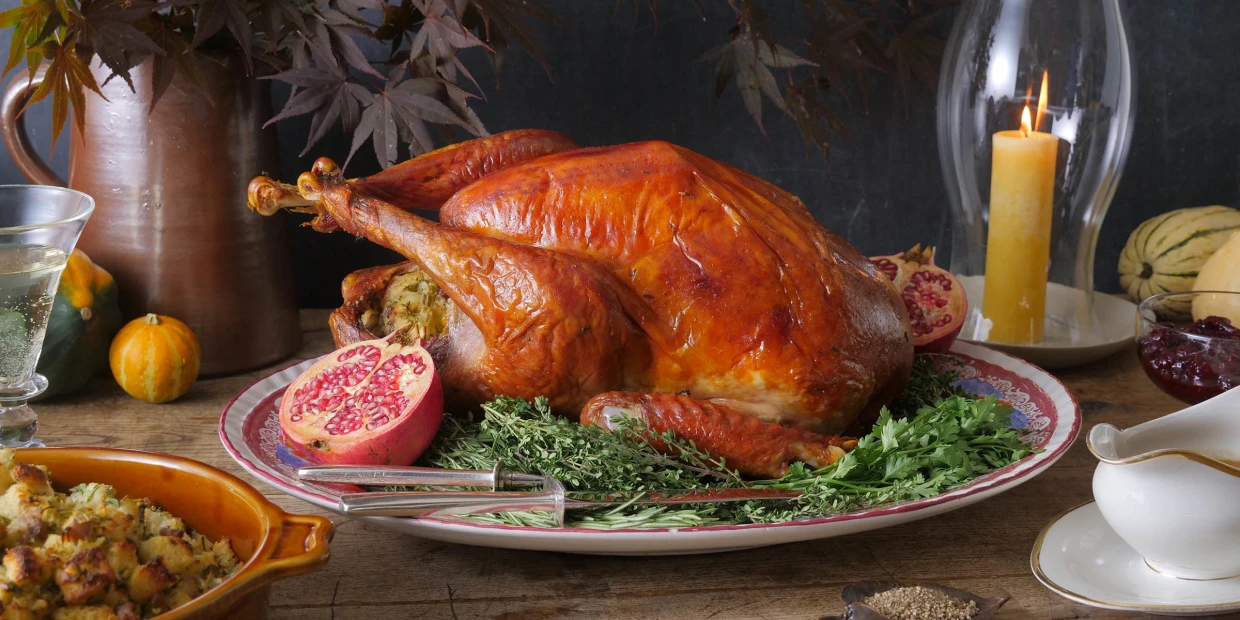Each November families across the United States gear up for the holiday feast and a mighty economic engine roars to life. The turkey takes center stage as more than a meal staple, it fuels a massive wave of seasonal spending. In 2025 inflation eases a bit supply chains steady somewhat and shoppers adapt to new realities yet the bird's role in the economy stays huge.
Turkey Spending Trends: From 2023 Peaks to 2025 Stability
Americans shelled out about $1.2 billion on turkeys in 2023 a figure that captured the holiday's full fervor. That total dipped to roughly $983 million in 2024 as softer demand met ample leftovers from prior seasons. Now in late November 2025 early tallies point to spending holding steady near $989 million based on projected consumption of around 46 million birds at current retail rates.
This consistency feels like a quiet victory amid broader grocery strains. Shoppers bought fewer birds last year partly due to higher living costs but tradition pulls them back each fall. According to analysis reviewed by Finance Monthly the 2025 numbers reflect resilient habits even as wallets feel the pinch from elsewhere.

The White House celebrates Thanksgiving with a festive turkey display, highlighting America’s $1 billion annual holiday turkey spending.
2025 Price Swings: Bird Flu Battles and Regional Rifts
Frozen turkey prices crashed more than 16 percent this year landing at $21.50 for a 16-pound bird or $1.34 per pound nationwide. That's a welcome drop from 2024's $25.67 average and it stems from volunteer shoppers tracking deals at stores like Walmart and Kroger. Yet not every shelf tells the same tale some areas report 15-pound turkeys hitting $34.65 about $2.31 per pound up 11 percent year over year.
Behind these splits lurks a fierce foe highly pathogenic avian influenza or bird flu which ravaged over 2.2 million turkeys in 2025 alone. Outbreaks surged early this season wiping out flocks and jacking wholesale prices by 44 percent according to the U.S. Department of Agriculture. Retailers swallowed those hikes to keep shelves stocked sparking what feels like a tense standoff between producers and consumers. "The loss of over 2.2 million turkeys to bird flu this year hits like a gut punch to farmers and families alike it threatens the very heart of our holiday gatherings," said Bernt Nelson an economist at Washington State University his words carrying the raw ache of a disrupted tradition.
The Full Feast Factor: What's in That $55 Holiday Bill?
A classic Thanksgiving spread for 10 now runs $55.18 down 5 percent from 2024 and the third straight year of declines since 2022's peak. Turkey claims about 39 percent of that tab a slimmer slice than before thanks to the price plunge on the bird itself. Sides like cranberries and pumpkin pie mix hold mostly flat while stuffing edges up a tad reflecting feed cost ripples.
This modest relief arrives as Americans host gatherings big and small often blending in store deals or homegrown tweaks. The American Farm Bureau Federation's survey of 42 states paints a picture of cautious optimism where every dollar saved on the main course frees up room for extras like wine or pie. Families in the Midwest might snag birds under $20 while coastal spots battle premiums yet the overall trend whispers of resilience in tough times.
Holiday Boost Breakdown: Turkeys as Economic Lifeline
Turkey buys ignite a November surge that lifts farmers processors truckers and store clerks across the board. Even with 2025's flock forecasts at 235 million down from prior years the holiday rush injects vitality into rural economies hit hard by flu fallout. Consumers tweaking menus or sizing down don't dim the spark this spending web touches billions in related goods from feeds to fuels.
Shifts in behavior show up too with more opting for fresh over frozen or bundles that pad carts beyond the bird. Retailers counter inflation with loss-leader tactics turning turkeys into gateways for full hauls and that strategy sustains the seasonal lift. In a year of mixed signals the fowl's pull reminds us how one meal weaves into the nation's financial fabric fostering jobs and joy amid uncertainty.
The Supply Chain Squeeze: How Bird Flu's Shadow Looms Over Your Holiday Budget
Bird flu doesn't just thin turkey ranks it creates a domino effect that subtly hikes costs elsewhere in your grocery run a phenomenon economists call supply chain contagion. Imagine a Midwest farm hit hard forcing reroutes for feed and labor which then bumps prices on eggs or bread by a few cents nationwide. This hidden pressure builds quietly often unnoticed until the full cart tally stings more than expected.
In plain terms supply chain contagion means one snag like a disease outbreak ripples outward tightening resources and nudging up expenses across linked industries. For Thanksgiving 2025 wholesale turkey jumps of 44 percent got absorbed at checkout keeping bird prices low but that absorption strains grocers who pass costs to other items. A real example comes from a typical Ohio household where pie crusts rose 8 percent this fall partly due to diverted corn supplies once earmarked for poultry feed.
This angle underscores a key insight retailers' heroics mask deeper vulnerabilities leaving families exposed to volatile bills long term. Historical data shows such disruptions cut farm incomes by up to 15 percent in affected years per USDA reports yet they spur innovation like diversified sourcing. Understanding this empowers shoppers to scout deals early and support local co-ops buffering against the next wave. It's a stark reminder that your plate's peace hinges on battles fought far from the table adding urgency to every holiday choice.

A deliciously cooked Thanksgiving turkey, the centerpiece of America’s $1 billion holiday meal tradition.
Beyond the Bird: What Readers Are Really Wondering
How Is Bird Flu Reshaping Turkey Supplies for 2025 and Beyond?
Bird flu outbreaks exploded in 2025 claiming over 2.2 million turkeys and slashing production forecasts by about 4 percent from initial goals. This surge hit earlier than usual starting in late summer and forced culls that tightened wholesale markets dramatically. While retailers held retail prices steady through promotions the underlying shortage could linger into 2026 raising odds of steeper hikes if vaccines lag.
Farmers now pivot to biosecurity upgrades and diversified flocks blending in ducks or heritage breeds to hedge risks. For consumers this means scouting sales now and considering meal swaps like ham to dodge potential crunches. The emotional toll on producers runs deep too with many describing sleepless nights over lost livelihoods yet their grit keeps traditions alive for us all.
What's the Projected Total Spend on Turkeys This Thanksgiving Season?
Projections peg 2025 turkey spending at around $989 million a near match to 2024's $983 million despite the price dip on frozen birds. This holds because consumption stays robust at roughly 46 million turkeys fueled by die-hard holiday rituals across 330 million Americans. Lower per-pound costs offset any volume dips from budget tweaks like smaller gatherings post-pandemic.
Regional flavors play in too with Southern states leaning heavier on fresh options that cost more but add premium appeal. Economists note this stability signals consumer confidence peeking through inflation clouds encouraging broader grocery splurges. It's a testament to how deeply the bird embeds in our culture turning a simple purchase into a billion-dollar economic anchor each fall.
Can Holiday Spending Offset Inflation's Bite on Family Wallets in 2025?
Absolutely holiday outlays like Thanksgiving feasts provide a counterpunch to inflation by injecting targeted boosts into consumer cycles that employ millions seasonally. NRF forecasts overall holiday sales topping $1 trillion for the first time ever with food categories leading the charge amid easing core inflation at 2.7 percent year over year. Families cutting back on gifts might redirect to meals fostering that warm communal glow without busting banks entirely.
Yet the divide grows in a K-shaped recovery where higher earners splurge freely while others hunt deals fiercely. This dynamic highlights smart strategies like loyalty apps or bulk buys which stretch dollars further and amplify the season's uplift. In essence these gatherings don't just fill bellies they knit economic threads offering hope that shared tables can steady shaky finances.














